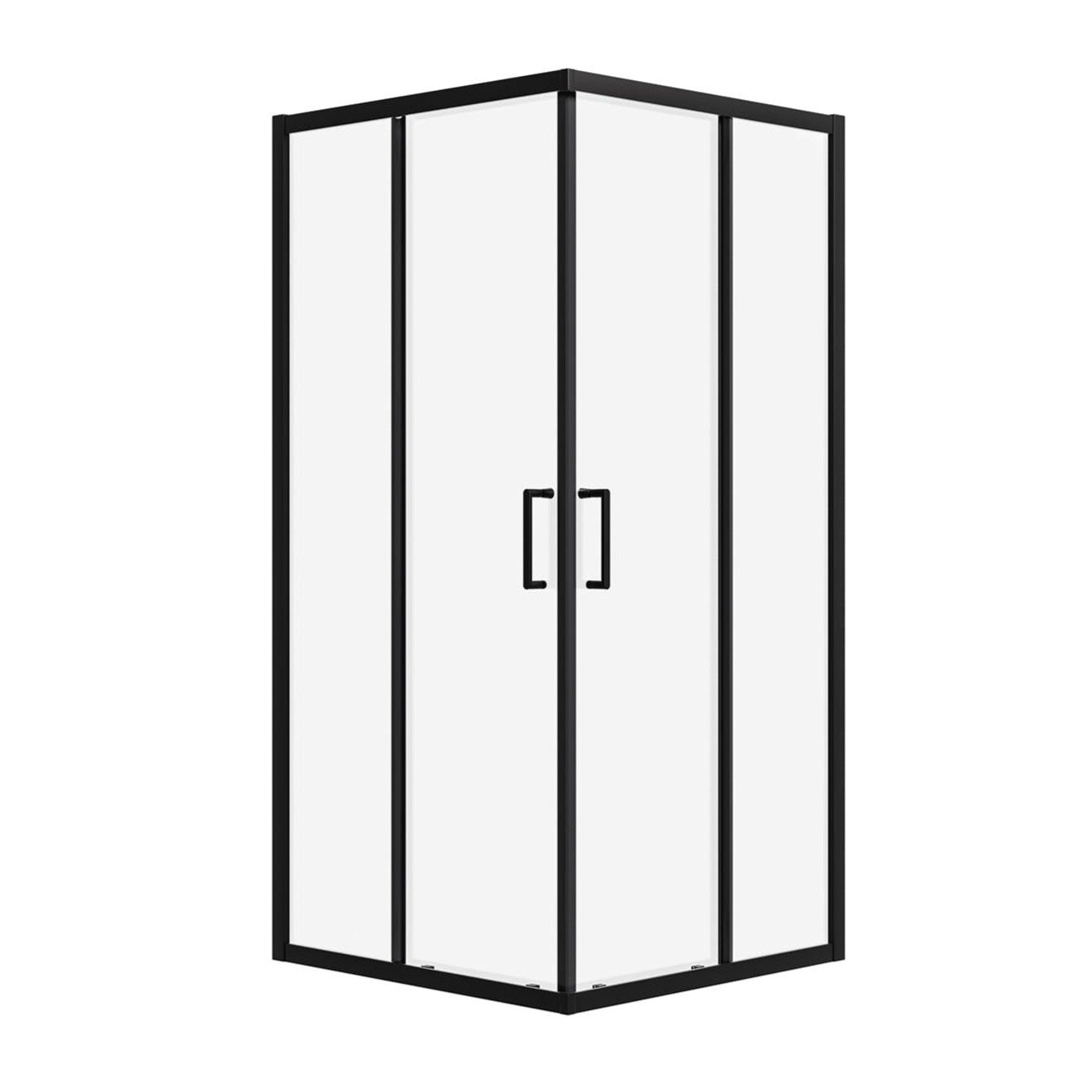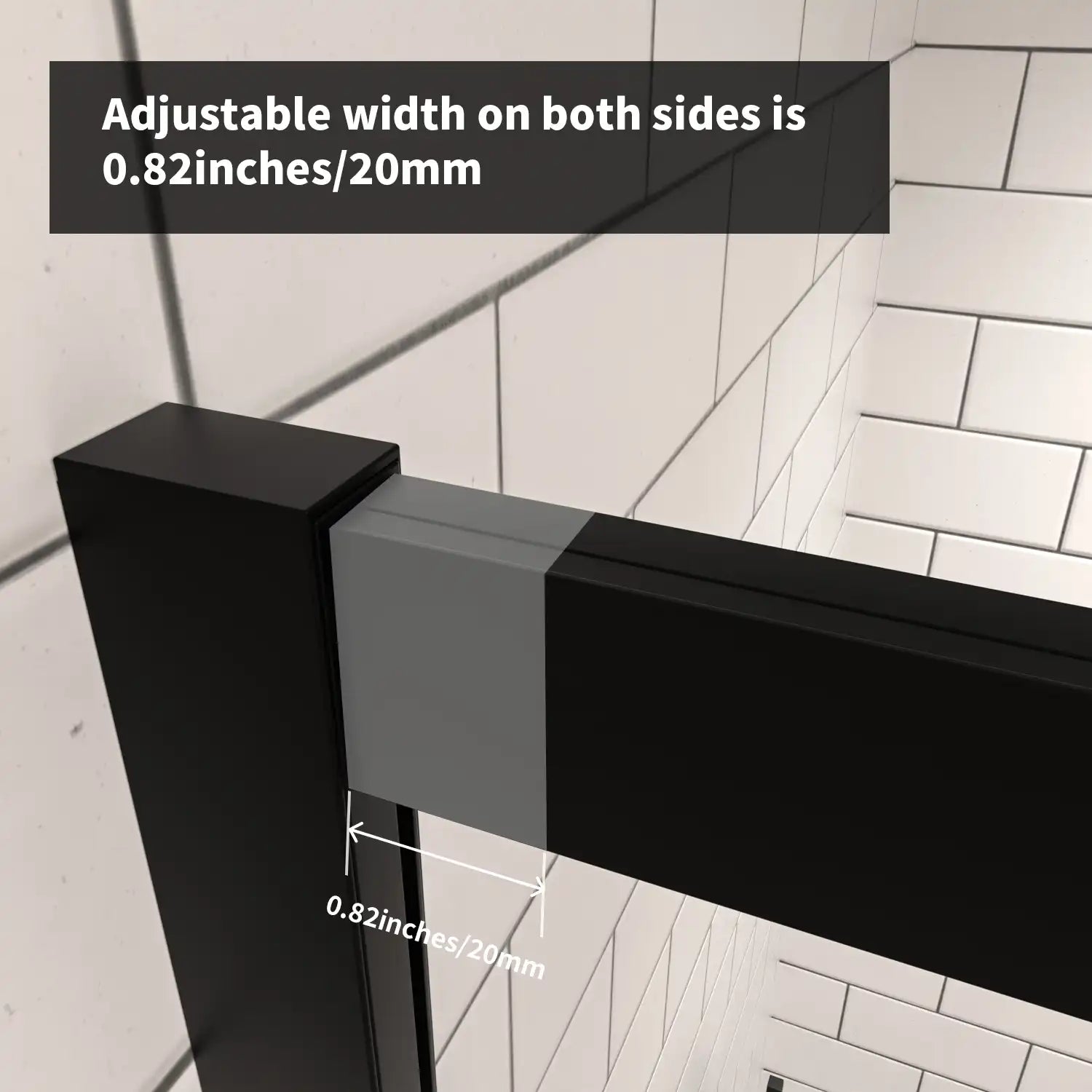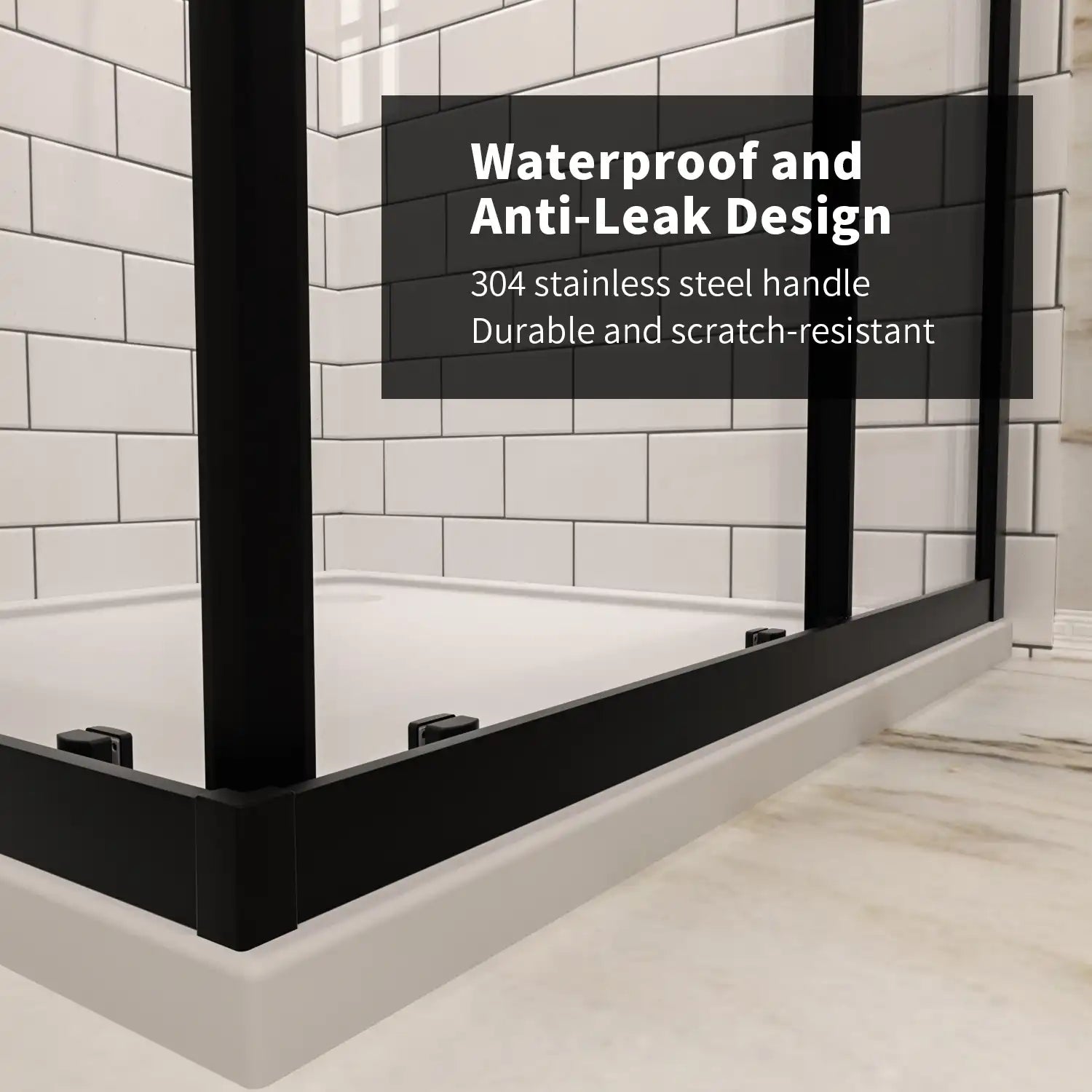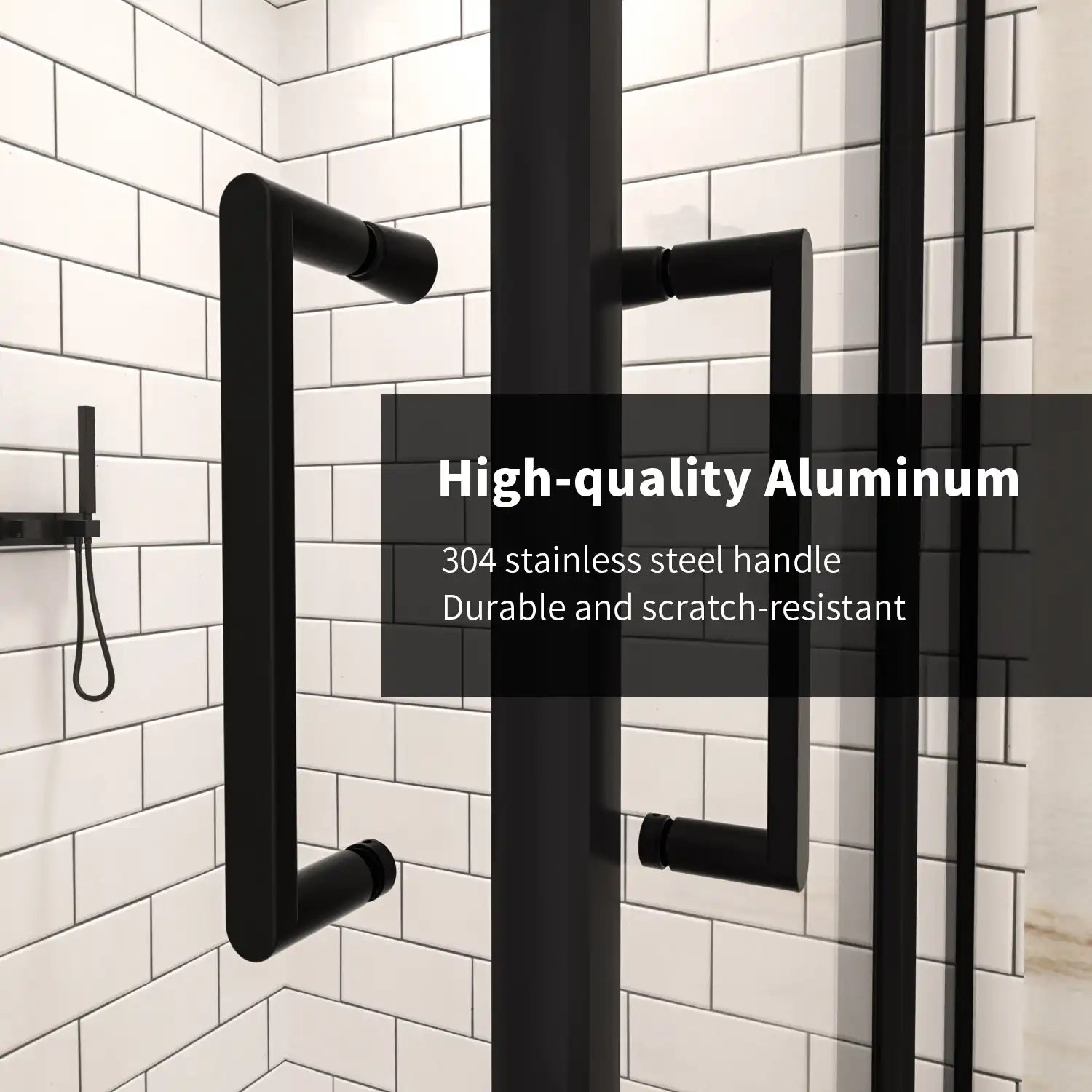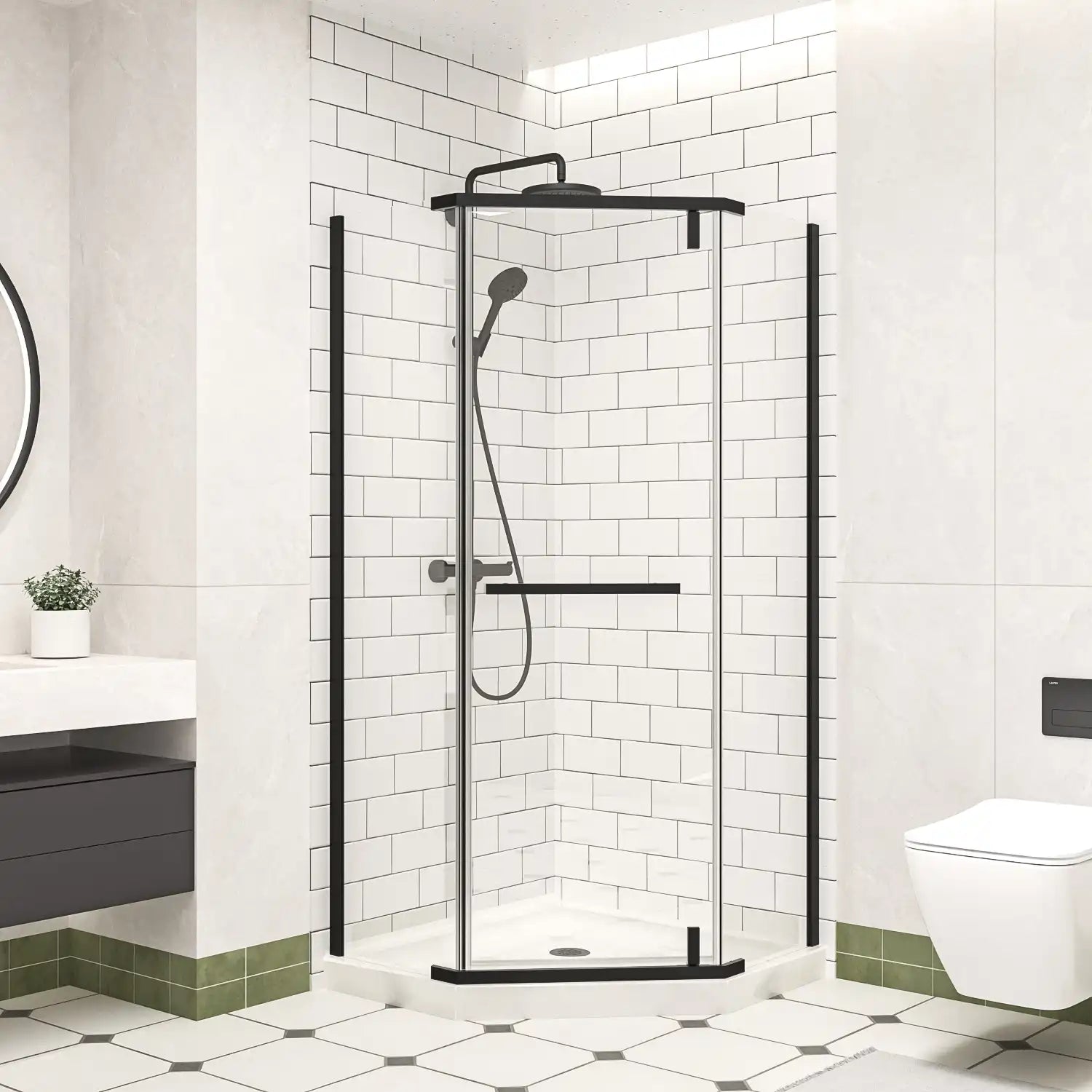Table of Contents
- What is a shower tub enclosure?
- Why do shower tub enclosures have such a wide price range?
- Usage experience: where the difference really shows
- The hidden cost of a cheap shower tub enclosure
- Moisture: the real test of product integrity
- Installation: the part you don’t want to get wrong
- How to choose the right shower tub enclosure for your needs
- Conclusion
- FAQ
Introduction
Shower tub enclosures are often viewed as the “budget-friendly” line item in a bathroom renovation plan. After all, how different can a piece of glass really be? It blocks water, closes shut, looks clean—so why do some cost $300, while others are priced well above $2,000?
Here’s the catch: two shower tub enclosures may look nearly identical when installed. But fast forward two or three years—one is still clear and smooth, the other is rusted, squeaky, and letting water puddle around your tub. That’s when you realize: it wasn’t just glass. It was an everyday-use system that should have been built to last.
This article breaks down why shower tub enclosures vary so widely in price—and what that price actually buys you. We’ll look at construction materials, hardware, structural flexibility, maintenance needs, and hidden costs that most people don’t consider until it’s too late.

What is a shower tub enclosure?
A shower tub enclosure is a fixed or movable glass barrier installed above a bathtub, usually in homes with a combined tub-and-shower layout. Its purpose is to prevent water from splashing out during a shower, replacing the traditional curtain with a more durable and modern look.
Typically made of tempered safety glass and supported by metal hardware, these enclosures come in sliding or hinged models, framed or frameless. While most look similar, the internal design and materials vary drastically, affecting how they perform over time.
Why do shower tub enclosures have such a wide price range?
Pricing isn’t just about brand. The cost of a shower tub enclosure is largely driven by:
1. Glass type and thickness
High-end enclosures often use 8mm to 10mm low-iron tempered glass, which is heavier, clearer, and more durable. It offers a higher-end aesthetic and resists thermal stress better. Low-cost models typically use 5mm to 6mm glass, which is still safe, but more prone to bowing, staining, and edge chipping over time.
Low-iron glass also provides a cleaner, color-true appearance, especially important for modern bathrooms with light tiles or backlighting.
2. Hardware durability
This is where high-end models truly differentiate. Stainless steel tracks, copper pulleys, soft-close hinges, and reinforced handles all contribute to smoother operation and long-term reliability.
In contrast, low-end enclosures use basic aluminum framing and plastic rollers that degrade in humid environments. After a year or so, rollers may crack or squeak, and once rust sets in, it's difficult to reverse.
3. Design flexibility during installation
High-end enclosures account for real-life construction variables like uneven walls or tile bulges. Their designs often feature adjustable wall clamps, self-leveling tracks, and optional extensions for non-standard spaces.
Budget models assume your walls are straight and flat—something rarely true in older American homes. This often leads to excessive caulking, poor sealing, and visible misalignment.

Usage experience: where the difference really shows
At first, most enclosures will look and function fine. But what separates a good investment from an annoying fixture is how well it performs six months, one year, and even five years later.
Cleaning and clarity
High-end models often include easy-clean coatings that repel water and soap residue. One quick wipe is all it takes to keep them spotless. Cheaper glass holds onto water marks and mineral buildup, requiring more scrubbing and specialty cleaners to stay clear.
Movement and closure
With high-quality bearings and glide tracks, a premium shower tub enclosure opens and closes almost effortlessly. It’s quiet, sturdy, and consistent. Cheaper models may feel rough or become difficult to move as components wear unevenly.
Water containment
Frustrated by small leaks or dripping edges? It usually comes down to poor seals or warped frames. Top-tier enclosures use multi-layer magnetic sealing systems and water diverter designs that keep every drop inside the tub area. That peace of mind alone is often worth the extra cost.
The hidden cost of a cheap shower tub enclosure
Let’s break down what many buyers don’t realize until it’s too late.
According to a 2023 Consumer Insights Survey, 1 in 3 homeowners who chose a budget shower tub enclosure ended up needing a partial or full replacement within three years. The most common complaints? Faulty rollers, broken seals, and leaks damaging surrounding flooring.
Now factor in the labor costs: even a simple repair can run $150–$300. Full replacement with removal and cleanup can exceed $1,000. Suddenly, the $300 “deal” has become a $1,600 inconvenience.
There’s also what we call the “invisible cost”—your time and frustration. Constantly cleaning foggy panels, realigning a misfitted door, or drying up puddles after every shower. Over months and years, those annoyances take a toll on your daily comfort.

Moisture: the real test of product integrity
Bathrooms are among the most humid environments in any home. If yours lacks proper ventilation—or you simply take long, hot showers—humidity becomes a silent destroyer of cheap materials.
Low-cost shower tub enclosures tend to use seals that dry out and crack quickly, especially when paired with fluctuating temperatures. Rollers corrode, tracks collect mildew, and frames begin to warp. Not only is this unattractive, but it also becomes a hygiene concern.
High-end models are built for this exact challenge. They feature:
- Corrosion-resistant hardware (often brass or marine-grade steel)
- Anti-fungal seals
- Precision-machined joints to reduce moisture infiltration
If you live in a humid climate or don’t have a window or strong exhaust fan, investing in a higher-quality enclosure is not a luxury—it’s a practical choice.
Installation: the part you don’t want to get wrong
This is where many people hit unexpected snags. Installing a shower tub enclosure isn’t like assembling furniture—walls may not be square, tubs may not be level, and tiling might be inconsistent.
High-end enclosures anticipate this. They include:
- Wall brackets that allow for a few degrees of correction
- Tracks that can be trimmed or adjusted
- More generous instructions and customer support from manufacturers
Cheaper models often come with rigid, pre-set parts and minimal instructions. That means more improvisation, more sealant, and more risk of something going wrong. A poor fit not only looks off—it leads to water leaks, reduced durability, and possibly voided warranties.

How to choose the right shower tub enclosure for your needs
Before choosing an enclosure, ask yourself:
- Is this my long-term or forever home?
- Do I want a sleek, modern look or just basic functionality?
- How often will the shower be used?
- Will children, elderly family members, or guests be using it?
- How much time do I want to spend cleaning and maintaining the door?
If you’re installing it in a rarely used guest bath or short-term rental, a lower-cost model may be sufficient. But if this is your main bathroom, or you care about durability and day-to-day convenience, the higher upfront cost is usually justified.
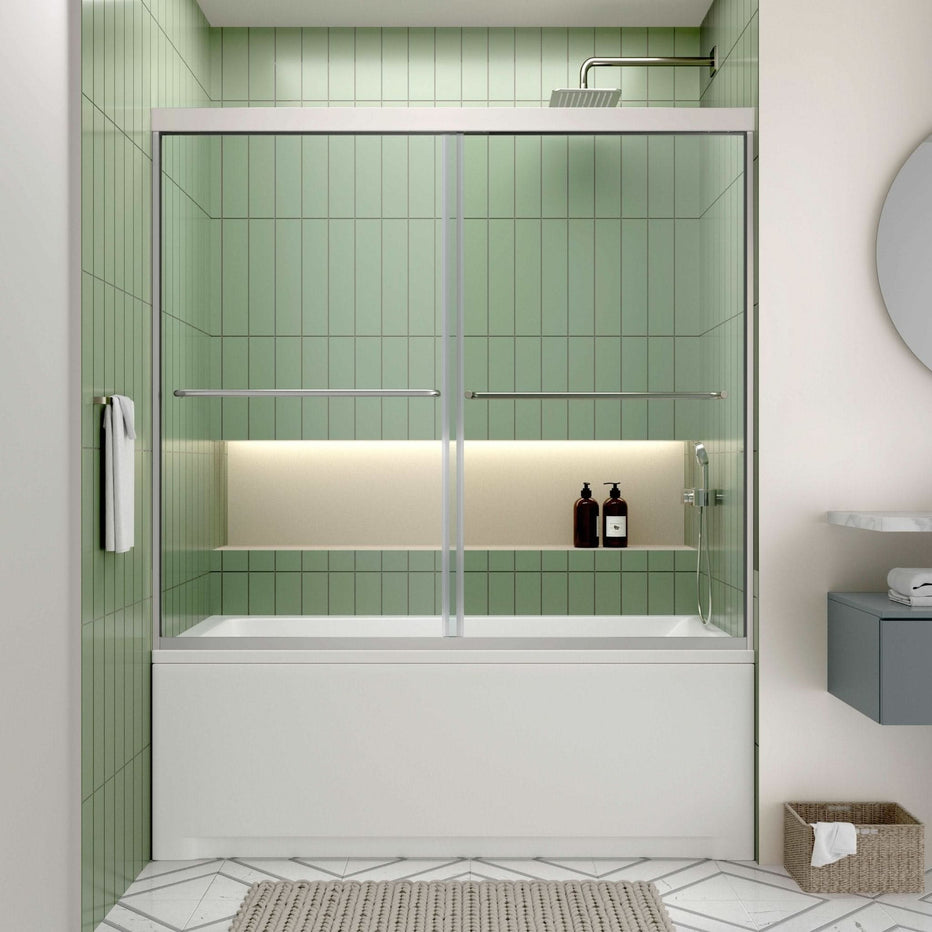
60" W x 58" H Framed Double Sliding Bathtub Shower Doors
Fits tub openings 56–60”; 6mm tempered glass with protective coating; Great for most standard sliding shower door bathtub installs
Conclusion
Choosing the right shower tub enclosure isn’t just about aesthetics—it’s about making a smart, long-term investment in your bathroom’s function, appearance, and comfort. Cheap enclosures may work for a while, but they rarely hold up under daily use, especially in homes with moisture, kids, or frequent guests.
A high-end option gives you:
- Cleaner, more modern design
- Easier maintenance
- Longer-lasting components
- Fewer leaks and breakdowns
- A better overall bathing experience
Our curated collection of premium shower tub enclosures is built with quality materials, sleek designs, and installation flexibility in mind—ready to meet the expectations of modern homeowners. Subscribe now to get early access to new arrivals, tips on installation, and exclusive launch offers.
FAQ
Q1: Can shower tub enclosures offer both privacy and style?
Absolutely. Many designs come in frosted, tinted, or etched finishes that balance privacy with natural light. Ideal for shared or open-plan bathrooms.
Q2: Are all enclosures safe for kids and elderly users?
Look for enclosures with tempered or laminated safety glass, soft-close doors, and low entry thresholds. These features are especially valuable for households with seniors or children.
Q3: How often should I clean a shower tub enclosure?
Ideally, wipe down after each use with a soft squeegee. For coated glass, avoid abrasive cleaners. Monthly deep cleans keep seals and frames in top shape.
Q4: What’s the average lifespan of a good shower tub enclosure?
High-end enclosures typically last 8–12 years with proper care. Budget models may start deteriorating after 2–4 years, especially in high-humidity settings.
Related Articles:
Why Everyone is Talking About Corner Tubs with Shower Enclosures in 2025?
Why a Shower Enclosure with Tub is More Than Just a Trend?
Tile Designs for Small Shower Enclosures That Make a Big Impact











